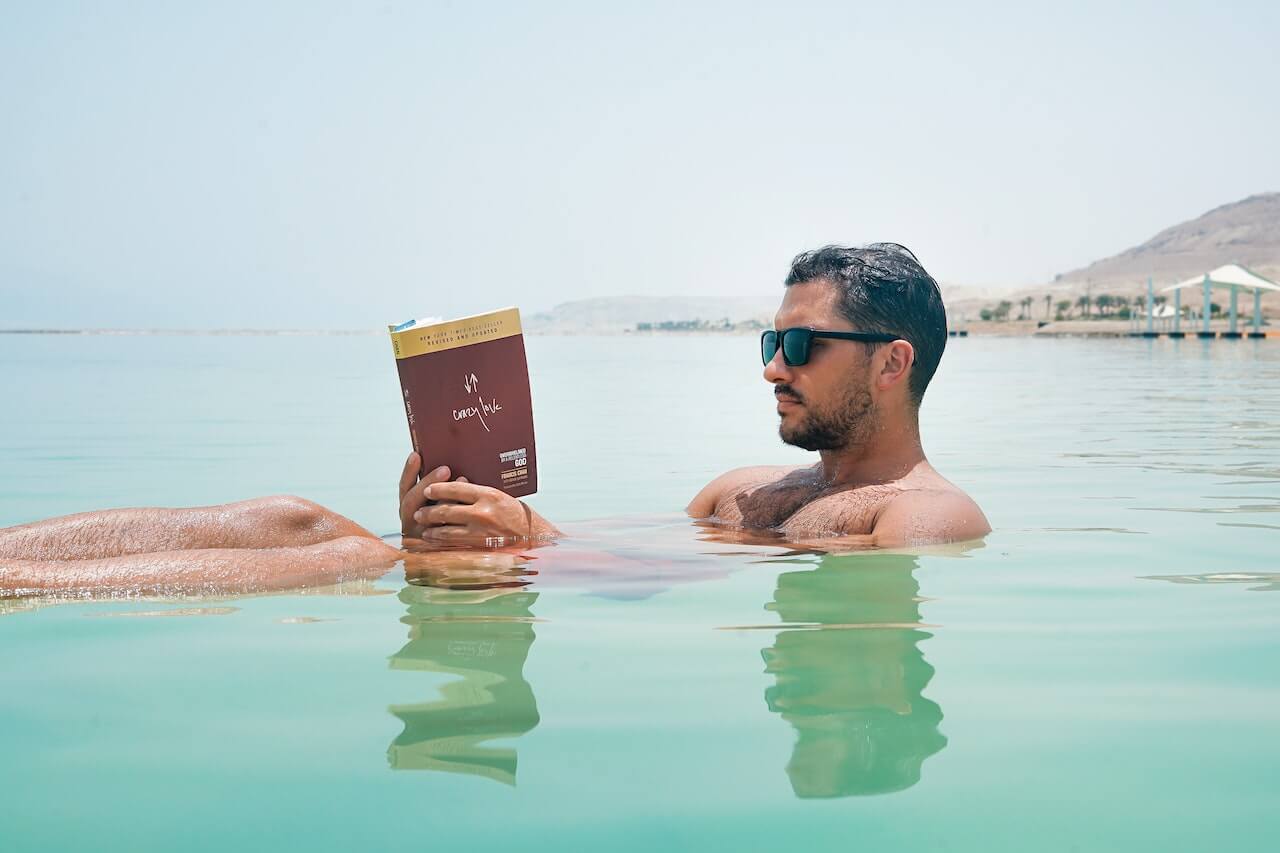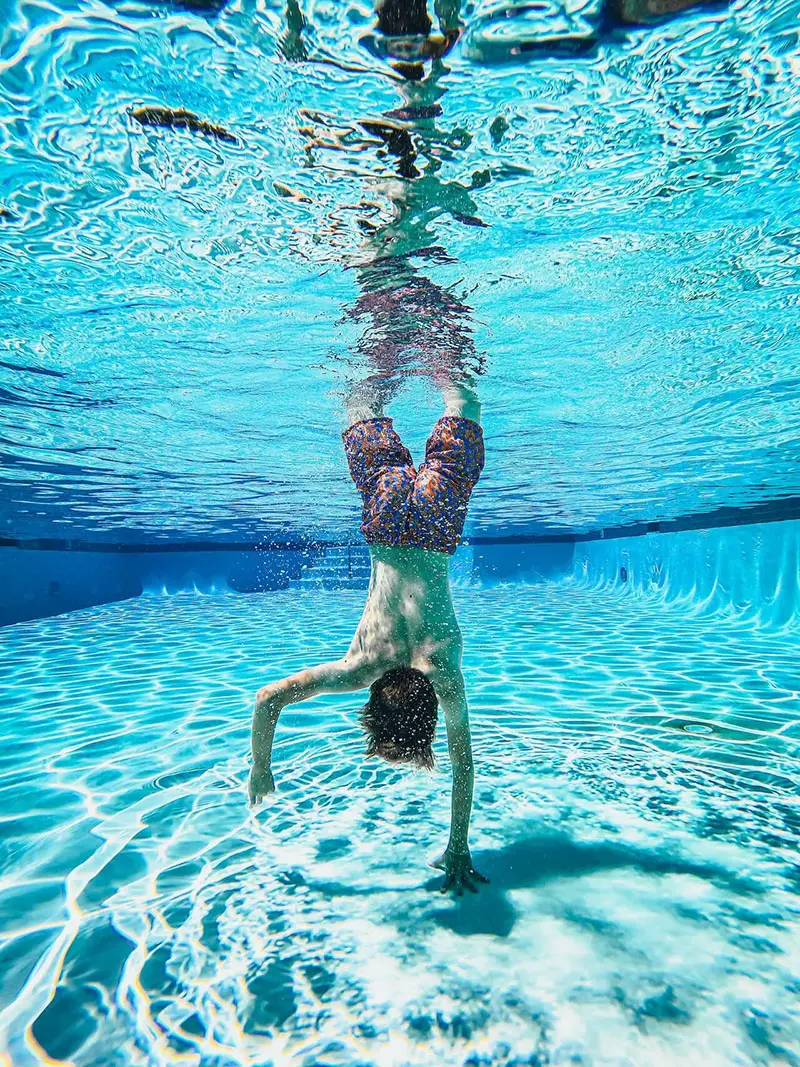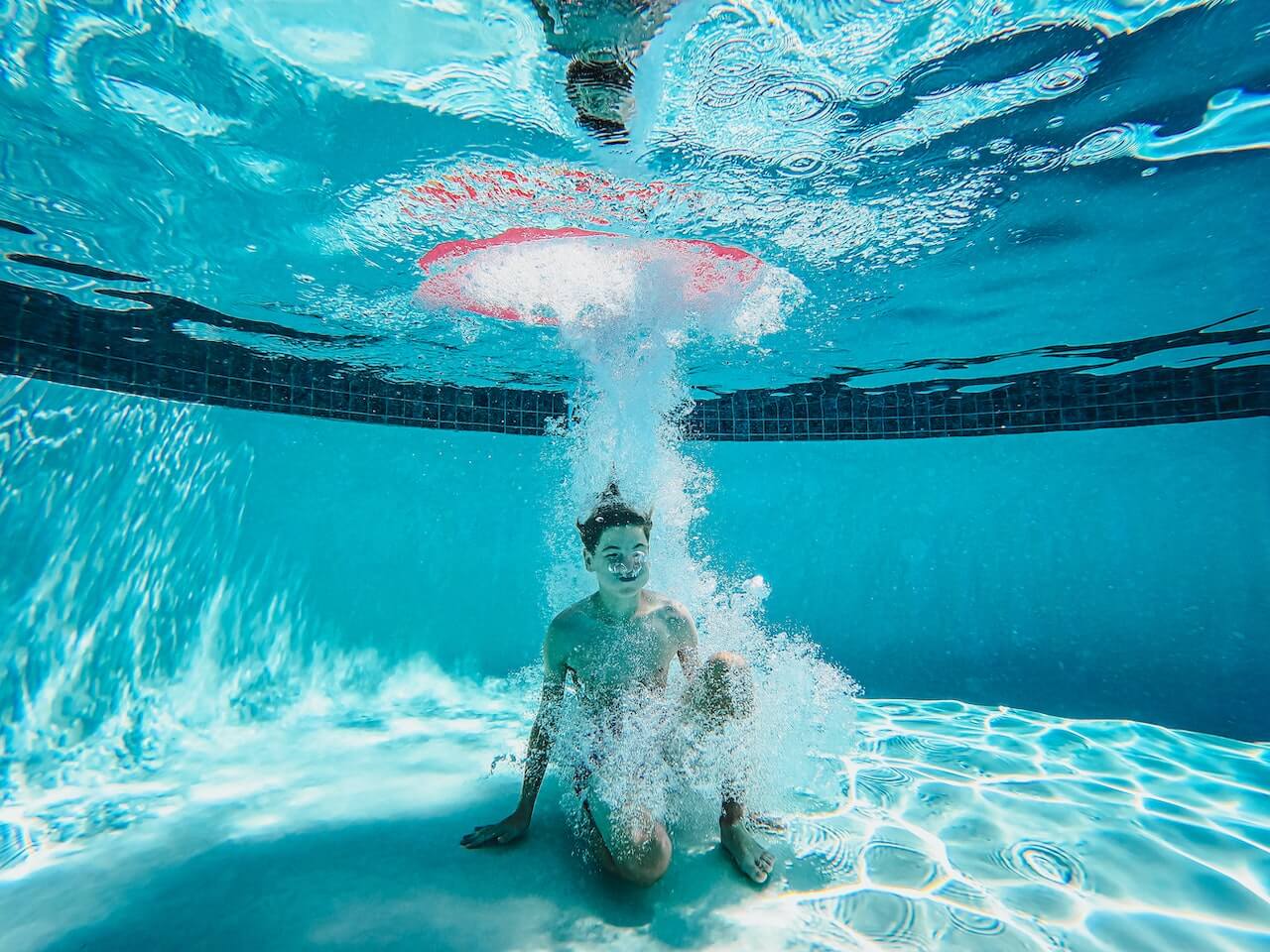Swimming to the bottom of the pool can be a fun and exciting challenge for those looking to improve their aquatic skills. Mastering the art of diving deep underwater can be useful for various water-based activities, such as snorkeling and exploring the depths of a swimming pool.
In this article, we will discuss essential techniques and tips for swimming to the bottom of the pool safely and efficiently. So, strap on your goggles and get ready to dive into the world of deep-water swimming!
Get Comfortable in the Water

Before learning how to swim to the bottom of the pool, you must first get comfortable in the water. This section provides helpful tips to overcome fear and practice floating, which are essential skills for building confidence in the water.
If you have already some swimming experience then move on to the next section.
Overcome Your Fear of the Water
Many people are afraid or uncomfortable with the idea of submerging themselves and swimming at deeper depths. To overcome this fear, practice the following steps:
- Gradually acclimate yourself by entering the shallow end of the pool first.
- Take deep, slow breaths to help calm your nerves.
- Submerge yourself until the water reaches your chin, then gradually go deeper.
- Enlist a friend or instructor to be your swimming buddy during the process.
- Practice in a controlled environment, such as a pool, before attempting to swim in open water.
The best way to overcome a fear is to face it directly and often until you desensitize yourself to it. This is known as exposure therapy and it is extremely effective at helping people defeat their childhood demons such as the fear of water.
Practice Floating
Being able to float allows you to feel comfortable and in control in the water. To practice floating, follow these steps:
- Enter the shallow end of the pool and stand with your back against the edge.
- Lean back, allowing your body to naturally float on the water with your face above the surface.
- Practice taking deep breaths to help with buoyancy.
- Experiment with different floating positions, such as starfish or pencil float, to see which works best for you.
Once you’ve become comfortable with floating, you’ll find it easier to move on to swimming and diving deeper into the pool.
Equalize Ear Pressure
As you dive deeper into the pool, the water pressure increases, which can cause discomfort in your ears. To counteract this, you need to equalize the pressure in your ears.
Check out the video below to learn the common ways you can equalize your ears.
One common method for equalizing pressure is the Valsalva maneuver, which you might know as the “pinch and blow method”. The Valsalva maneuver involves pinching your nose and gently blowing out while keeping your mouth closed.
You can also use the Toynbee maneuver, which entails swallowing while pinching your nose closed. You do not have to actually swallow a cup of water like in the video; just swallow spit or activate the throat muscles as if you were swallowing.
Lastly, the jaw wiggle involves… wiggling your jaw! This can help pop your ears to get rid of the pain of the mounting pressure buildup.
These techniques help to balance the pressure in your ears and make diving more comfortable.
Remember to equalize pressure frequently as you descend to avoid discomfort or potential injury.
Do NOT Dive with Swimming Goggles! Wear Dive Masks Instead

A common mistake beginners make is diving with swimming goggles. They’ll find that as they dive deeper underwater, the goggles start to squeeze their eyes painfully until they are forced to surface.
Sometimes the damage is already done by then, and you end up bursting a few blood vessels and having bloodshot eyes. Not a good look.
What’s happening is that the air trapped within the lenses of your goggles compresses the deeper you dive, creating a damaging suction effect around your eyes. This is known as “mask squeeze“.
The only way to prevent this is to equalize the pressure by introducing air into the goggles’ lenses, but you can only do that with a dive mask.
Dive masks are what snorkelers, free divers and scuba divers use. Dive masks have a nose pocket that is connected to the mask’s lenses.
This allows you to exhale some air to equalize the pressure, alleviating the painful vacuum effect on your eyes. Do not dive with swimming goggles, dive with a dive mask instead.
Swimming Styles for Diving
In this section, we’ll explore two swimming styles that can help you dive deeper and swim more efficiently to the bottom of the pool: Breaststroke and Flutter Kick.
Breaststroke
The breaststroke is a popular swimming style that allows you to efficiently propel yourself underwater. This stroke is particularly suited for diving because it helps maintain a streamlined body position while generating forward motion. To perform the breaststroke while diving:
- Start with your arms extended in front of you and your legs together.
- Move your arms outwards in a semicircular motion, pushing water towards your chest.
- Bend your legs at the knees and bring your heels towards your buttocks.
- Thrust your legs backwards in a whipping motion, propelling you forward.
- Glide for a moment and then repeat.
Flutter Kick
The flutter kick is another effective swimming technique for diving, often used in freestyle and backstroke swimming. This kick helps maintain a streamlined body position, propelling you through the water. To perform the flutter kick while diving:
- Keep your legs straight with your feet relaxed.
- Alternate kicking your legs up and down with quick, small movements.
- Use your hips to generate the motion while keeping your knees slightly bent.
- Focusing on maintaining a steady rhythm to provide constant propulsion.
Utilizing these swimming styles can enhance your diving experience, allowing you to swim to the bottom of the pool with ease and control.
Descending to the Bottom

In this section, we will discuss the techniques required to swim down to the bottom of the pool. We will cover arm movements and leg movements that can help you descend smoothly and efficiently.
Arm Movements
When swimming down to the bottom, it is important to use your arms effectively. This could give you more control and stability in the process. Here are some arm movements to keep in mind:
- Streamline: Stretch your arms above your head with your biceps touching your ears. This will help create a streamlined body position and reduce resistance as you descend.
- Sculling: You can use sculling motions, similar to treading water, to gently propel yourself downward. Keep your palms facing the pool’s bottom, and move your hands in a figure eight pattern to push yourself down.
Leg Movements
Leg movements are equally essential in providing propulsion and maintaining balance as you descend to the bottom of the pool. Here are a couple of leg movements to consider:
- Bend and sink: Bending at the hips and bringing your legs over your body in an inverted position can help you sink using the weight of your lower body.
- Frog kick: Use a frog kick motion, similar to the one used in breaststroke, to propel yourself downward. This kick involves bending your knees, bringing your heels towards your hips, and then kicking your legs out and back together in a swift, sweeping motion.
Combine these arm and leg movements to help you effectively swim to the bottom of the pool. Remember to always practice safety precautions when underwater and have a buddy to assist you if needed.
Safety Tips
Avoiding Shallow Dives
One important aspect of swimming safely to the bottom of the pool is to avoid diving into shallow water. Diving into shallow water can increase the risk of head, neck, and spine injuries.
Always check the depth of the pool before diving and follow the pool’s safety rules and guidelines. Remember that it’s safer to walk and not run around the pool to prevent slips and falls.
Swim with a Buddy
Whether you are swimming in a pool or open water, always swim with a partner. Having someone with you while swimming reduces the risk of drowning or other accidents. A buddy can help you if you experience difficulties, such as muscle cramps or fatigue, while trying to swim to the bottom of the pool.
Additionally, it’s essential to gauge your energy levels and make sure that you can swim back to the surface safely. Swimming to the bottom can be physically demanding, so avoid pushing your limits too far.
In summary, to safely swim to the bottom of the pool, avoid shallow dives, swim with a partner, and always pay attention to your energy levels. By keeping these safety tips in mind, you can enjoy your time in the water with confidence.
Photo Credit: Dominik Moser (CC BY-NC 2.0)

